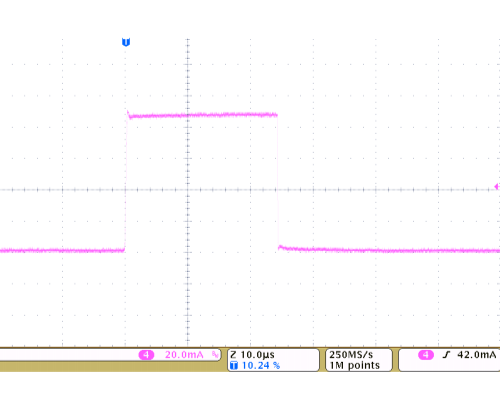3.2 Buck LED Driver
The Buck converter and linear driver are used to driving the LED string. Figure 3-5 shows the diagram of the BUCK LED driver.
In the Buck converter, the MCU ATxmega32E5 generates a fixed 1 MHz PWM to drive the Q1 MOSFET, to output the proper voltage for the LED string. When the MCU detects more than 1V at the drain (D) of Q2, it immediately turns off the PWM signal and then turns off the Q1 MOSFET. Therefore, the voltage over the capacitor (C) will decrease until the voltage at the drain of Q2 is less than 1V. This is achieved by using the Event System connected to the Fault extension module in the ATxmega32E5.
In the Buck Converter circuit, the response speed of the Q1 MOSFET should be as fast as possible, and the delay time should be as short as possible between the PWM output of the MCU and the driver of the Q1 MOSFET.

| Pin on AVR® ATxmega32E5 | Buck Circuit PWM |
|---|---|
| PC5 | PWM1_V |
| Pin on AVR® ATxmega32E5 | Linear Driver of the LED |
|---|---|
| PC6 | PWM2_L |
| PA0 | ILED_AC_IN+ |
